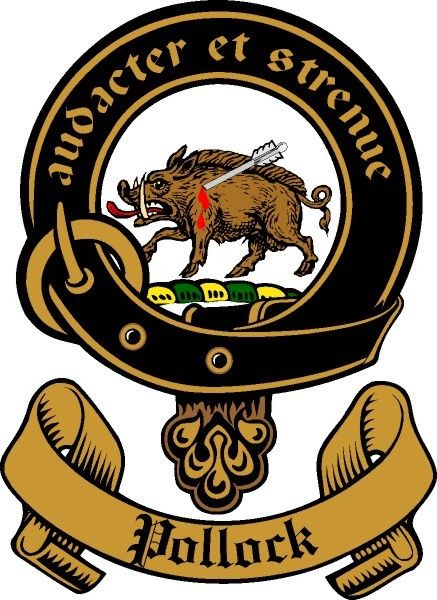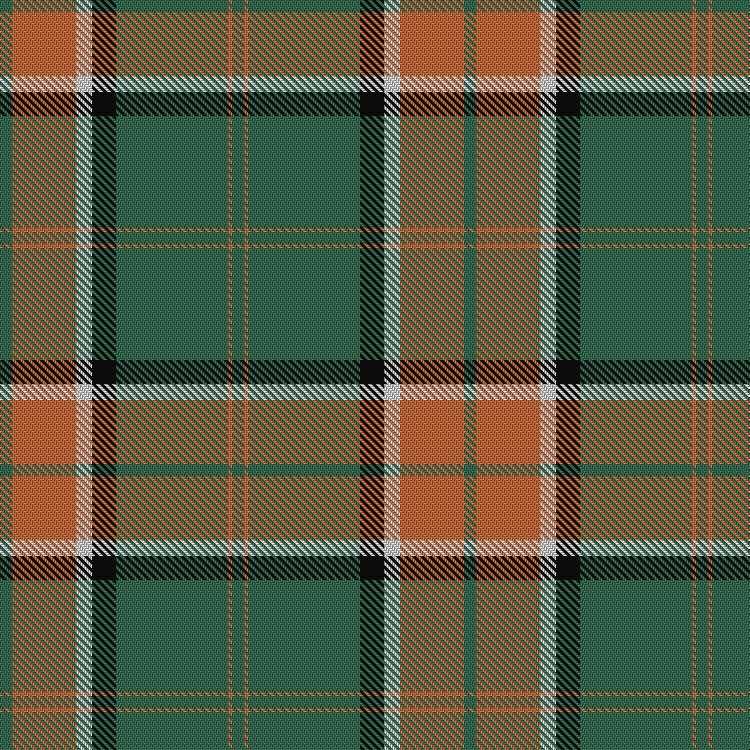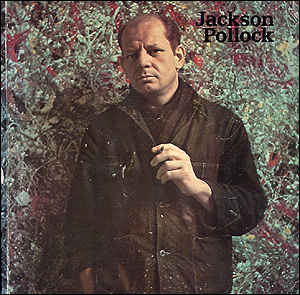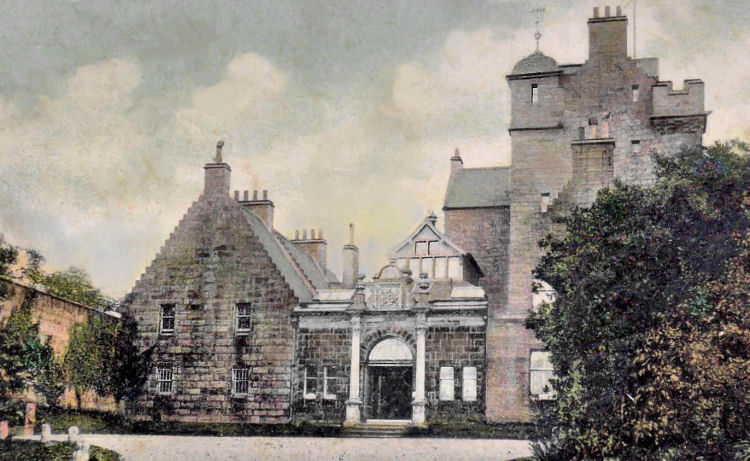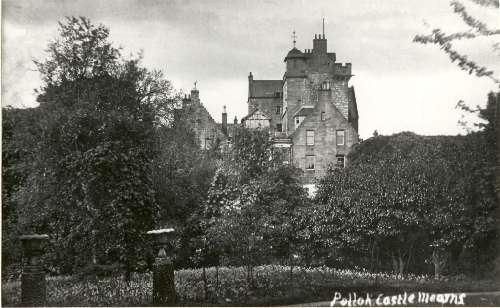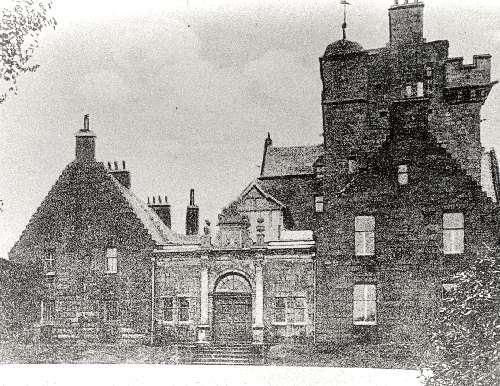The Genealogy of Tristan Pollock and Clan Pollock
Fáilte and Velkommen (that’s Gaelic and Norse for welcome) — I'm Tristan Pollock, the origin of where all of this hard-earned genealogy stems from and the creator of the Pollock Family Tree on MyHeritage. I’m creating this post as a highlight and overview of our family history to make it more interesting and easier to digest than a family tree.
Hi, this is me, Tristan Pollock.
Of course, I owe a HUGE THANK YOU to my grandmother Marilyn Warner Abel who did most of the hard work on both sides: Abel (my mama) and Pollock (my papa). Think of all the letters, library research, and other correspondence in getting a family tree correct before the all-answering Internet. I know, It’s awe-inspiring and I owe her so much for keeping records and then sitting with me for hours going through them. She’s a strong, punchy woman who’s currently 89 and the oldest in our family.
The online Pollock Family Tree currently has 323 names in it. It shows that I’m six generations out of Scotland on the Pollock side and 11 out of England on the Abel side. Although that’s just a small dent to what it could be. That’s why I’m putting together this blog post. Below I’ll share the all-time interesting facts of the last decade of my Pollock genealogy work.
So, without further ado, here are the notable Pollock factoids we’ve uncovered so far.
Family Lineage
The name of Pollock (originally Pollok) is among the oldest family names in Scotland dating to the 12th century. It stems from the features of the land like many surnames from Scotland. The translation is a body of water such as a small pond or lake. The name 'Pollock' in Celtic translates to Pollog, "people who live by a pool.”
The surname Pollock, or Pollok, is of territorial origin. It was taken by Peter, eldest son of Fulbert, or Fulburt, who was given a grant of Upper Pollock in Renfrewshire, and went on to take his name from the lands. The lands were given to him sometime between 1150 and 1153, during the reign of David I, by Walter fitz Alan (d. 1177), the 1st High Steward of Scotland, as a thanks for his father’s service to Scotland, particularly at the Battle of the Standard in 1138.
Among the all the peoples of ancient Scotland, the first to use the name Pollock were the Strathclyde Britons. It was a name for someone who lived at Pollok (Gaelic: Pollag), a large district on the south-western side of the city of Glasgow, home to Crookston Castle, where Mary, Queen of Scots, was once held. The name of the town has Gaelic origins, from the word 'poll', meaning "pool" or "pit.”
The surname Pollock was first found in Renfrewshire (Gaelic: Siorrachd Rinn Friù), a historic county of Scotland, today encompassing the Council Areas of Renfrew, East Renfrewshire, and Iverclyde, in the Strathclyde region of southwestern Scotland, where the first occurrence of the name is Peter, son of Fulbert or Fulburt who was granted the lands of Upper Pollock by the High Steward, and who took the surname from the lands, making him the first Pollock. Peter gave the church of Pulloc and its pertinents to the monastery of Paisley, sometime between 1177 and 1199. Within that same period of time, he also confirmed the charter of his brother Helias of Perthic to the same house. Peter also possessed lands in Moray and circa 1175, he witnessed the charter by William the Lion granting Burgin to the Abbey of Kinlos.
Circa 1230, Murial de Polloc, a daughter of Peter, gifted her land of Inuerorkel and all its pertinents for the benefit of the hospital erected beside the bridge of Spey for the reception of travelers. Continuing this pattern of generosity, Robert de Pollok granted to the monastery of Paisley, during the reign of Alexander II, alms of twelve pennies a year from the rents he earned from his lands. Other important Pollocks include John Pollok who was both steward of the Abbey of Arbroath and sheriff of Forfar.
The Clan
Pollock is an armigerous (they provided armed support in exchange for land) Scottish clan whose origin comes from a grant of land on the southern bank of the River Clyde to the sons of Fulbert "the Saxon" from Walter fitz Alan, the 1st High Steward of Scotland. This was during the reign of King David I.
Fulbert was a Norman name and the same name as William the Conqueror's father-in-law although not the same person.
With the nickname of “The Saxon,” Fulbert could have stemmed from the Saxon people before becoming a Scottish Pollock. The Saxons were a Germanic people whose name was given in the early Middle Ages to a large country, Saxonia, near the North Sea coast of what is now Germany. Earlier, in the late Roman Empire, the name was used as a word something like the later "Viking", as a term for raiders and pirates.
Some documents also show Robert as having the surname “de Steinton” (Stenton in East Lothian) and him and his brother Peter appear to have been given land by the FitzAlan family in return for armed support, and perhaps changed their name and abode to Robert de Pollok, and Peter or Petrus de Pollok.
These surnames are all connected to Clan Pollock by way of Medieval variations in spelling: Pollock, Pollok, Pook, Polk, Polke, Paulk, Poalk, Poalke, Poulk, Poolke, Pogue, Pollocke, Polloch, Pollick, Pooke, Poag, Poage, Poague, Poak, and many more.
The different names stemming from the same family are a result of the lack of spelling rules in the English language prior to three hundred years ago. Scribes often spelled according to sound and would even change the spelling of a name in a single document.
The era of William Wallace — John de Pulloc, who lived in the time of Edward I of England, and, unfortunately for himself and family, took part with Baliol against Bruce. He appears (from Pryne's collection, p.662) to have sworn fealty to Edward and in the reign of Robert Bruce, about 1310, there appears to have been a grant by Robert of his moveable goods to the Abbey of Arbroath, for his joining the English. Probably, from this cause, and at any rate about this period, a part of the family estate appears to have been ravished from the Polloks of that-Ilk, and to have been seized by the Maxwells, Lords of the Mearns.
Mythbusters
The Fish — The fish known as Pollock or Pollack is not related. It is only a shortening of its scientific name: Pollachius pollachius.
The Polish slang word — Clan Pollock is also unrelated to the slang Polack or Polak that has been used to describe a person of Polish descent or as an ethnic slur.
The Pollock Crest & Tartan
Crest — A boar shot through with an arrow (also called a dart or passant).
Coat of Arms — A green shield with a gold saltire between three hunting-horns.
Chiefly arms — A saltire Vert, 2nd, 3rd and 4th or bugle horns stringed and garnished.
Motto — Audacter et strenue. The motto translates from Latin as "boldly and earnestly" or “boldy and strongly.”
Tartan — Pollock Ancient and Pollock Modern. Tartan register listing.
Robert de Pollock’s crest varies from the common Pollock crest and shows a man on a horse with his hunting dog while Peter de Pollock’s crest is the boar with an arrow in its left shoulder. These two seals are believed to be the earliest family seals (except for kings and nobles) known in the United Kingdom as landed gentry — the Norman French "de" denotes their town of origin.
Pollock tradition says the crest was granted by a king for having his life saved while hunting an old and wily boar that had unseated the king and was about to gore him to death. A Pollock thus shot the boar and spared the king his life. This boar has since become the most notable Pollock crest.
The Pollock crest has a wax seal in the British Museum that shows the very first version of it. I have yet to visit, but hope to go there soon and share photographic proof as there are many recreations online and it’s hard to tell what is the most official version. As with the tartan, it seems to be listed on a government site for tartan registry, so it feels more official. The hard part is understanding the colors as it relates to the strength of the dyes. Older tartans were more faded while newer tartans are more bright.
Famous Descendants
James K. Polk — the 11th President of the United States is directly related to the Pollocks as a descendant of Robert Pollock of Ayrshire, one of the first immigrants to the United States from Clan Pollock.
Jackson Pollock — the famous abstract painter was born into Clan Pollock in Wyoming in 1912. His father had been born with the surname McCoy, but took the surname of his adoptive parents, neighbors who adopted him after his own parents had died within a year of each other.
Oliver Pollock — helped finance the American Revolutionary War and created the U.S. Dollar sign.
William R. Pogue — one of nineteen astronauts selected by NASA for the Apollo program in April 1966. He also was the Pilot of Skylab 4, the final manned visit to the Skylab Orbital Workshop, from November 16, 1973, to February 8, 1974 and the longest manned flight (84 days, 1 hour and 15 minutes) to that date. He also wrote the book, “How Do You Go to the Bathroom in Space?”
Graeme Pollock — widely regarded as South Africa's greatest cricketer.
Willis Polk — was a major driving force in rebuilding San Francisco after the 1906 earthquake destroyed 80% of the city.
For a more complete list of notable Pollocks see this Wikipedia section. They range from soldiers to politicians and from athletes to writers.
There’s also a list of Pollock baronets, a hereditary title award by the British Crown. Here’s the history of the Baronet.
J. D. Polk — current Chief Health and Medical Officer of NASA.
Historical Sites to Visit
Pollok Castle, Scotland — there was a Pollok Castle. However, the site of the old Pollok Castle in Mearns is now private and a large country home with gated security with a guard now stands. I drove by September 2018 and you can see the property along the country road that winds next to the old Pollok Castle lot. It was originally a simple battlemented tower, which was demolished by Sir Robert Pollok in 1710 and replaced with a “stately large house of a new model.” The large house survived until 1882 when it was almost entirely destroyed by a fire. In 1886, the large house was rebuilt in the Scottish Baronial style by Mrs. Fergusson Pollok to the designs of the architect Mr. Charles S. S. Johnston. In 1947, the estate was inherited by a nephew of the last of the Polloks to occupy the castle, who then sold it on to a developer. That developer removed most of the historical buildings by 1954.
John Pollok fought on the side of Mary, Queen of Scots, at the Battle of Langside on 13 May 1568, only a few miles from Pollok Castle and, as a result, was forfeited of some of his lands.
https://www.damstodarnley.org/pollok-castle.htm
Glasgow University Archaeological Research Division (GUARD) undertook work on the Pollok Castle site and history in 2000 and much of what is known is based upon this work (Ballin Smith and MacGregor 2000). The historic maps are one of the best sources for the history of Pollok Castle. The castle seems to appear on Pont’s map (1583-96), as a castle named ‘Pook’. It also appears on Blaeu’s map of 1654.
The structure was originally a simple tower house, thought to be medieval in date. During investigations by GUARD, an area of mortared stonework with dressed faces was discovered overlying bedrock. Further analysis revealed this to be the remains of a stone foundation for the pre seventeenth century tower house (Ballin Smith and MacGregor 2000).
Pollok Castle was rebuilt between 1686 and 1694 by Sir Robert Pollock. The south and east walls of the earlier tower house were removed and what remained of the structure was incorporated into a wing extending to the east. The structure was gradually extended over the years to include an enclosing courtyard with an ornate gateway leading into a walled garden to the south. This garden was very formal, with high walls and corner pavilions.
Roy’s map (1747-55) shows the castle in detail and the associated policies at their most extensive. It is set within a designed and landscaped garden, with formal pathways and avenues and structured planting. The gardens extend across the Brock Burn to the west. Richardson’s map (1795) records the name ‘Over Pollock’, associated with a Miss Pollock, while Ainslie’s map (1800) uses the name ‘Upper Pollock’ but again records the owner as Miss Pollock. Ainslie depicts a reduced designed landscape; the policies seem to all lie on the east side of the Brock Burn by this time (1800).
The first edition Ordnance Survey map (1858-64) shows the castle and grounds in detail, including the formal walled garden with corner pavilions. There are possible vegetable gardens to the east and woodland beyond that (Ballin Smith and MacGregor 2000). All four editions of the historical Ordnance Survey maps refer to the castle as Pollok, rather than Pollock.
The house was destroyed by fire in 1880, but photographs of the building both before and after the fire survive. The house was rebuilt in 1886 in the Scottish Baronial style, incorporating some of the surviving elements of the earlier structure.
The castle was requisitioned by the British army in 1939, but one wing of the house was occupied by the Pollock family throughout the war. The estate was apparently used as an ammunition dump throughout this period. The house continued to be inhabited until 1944, when Miss Ferguson Pollock moved out and it was finally abandoned. The poor condition of the building required that it be demolished less than ten years later, in 1952. The majority of stone from the castle was sold and used as hard core for an airfield runway. Subsequently, it is believed that several prefabricated houses were constructed on the site to form one large structure, but this was removed by the late 1970s. The site now contains a private residence, although one or two visable traces of the castle still remain.
Renfrewshire, Scotland — the surname Pollock was first found in Renfrewshire (Gaelic: Siorrachd Rinn Friù), a historic county of Scotland, today encompassing the Council Areas of Renfrew, East Renfrewshire, and Iverclyde, in the Strathclyde region of southwestern Scotland, where the first occurrence of the name is Peter, son of Fulbert or Fulburt who was granted the lands of Upper Pollock by the High Steward, and who took the surname from the lands, making him the first Pollock.
Ayrshire, Scotland — is a historic county and registration county in south-west Scotland, located on the shores of the Firth of Clyde. This is where the Scottish Genealogy Society showed my ancestors being from.
Paisley Abbey — Robert de Pollok granted to the monastery of Paisley, during the reign of Alexander II, alms of twelve pennies a year from the rents he earned from his lands. The main line of Pollock descent is from Robertus, who was a witness to the founding of Paisley Abbey in 1160, being described as "Roberto filio Fulberti." Between 1189 and 1199 he granted the Church of Mearns to the Monastery of Paisley. The original church building no longer stands. The location for the present church of Mearns is at the intersection of Eaglesham Road and Mearns Road. Many prominent Pollocks are buried in the adjoining cemetery and within the walls of the church.
Nation Records of Scotland — you can use their online database as well as their Search Rooms in Edinburgh. It is in the Edinburgh castle where I acquired a parchment of Pollock family history.
Pollok House, Scotland — there still is a Pollok House. As with the Pollok name, the Pollok House may derive its name from the land and be unrelated to Clan Pollock directly, but the house was owned by the Maxwell Clan and Clan Pollock is a sept of the Maxwells, so the clans themselves are closely related. You can visit the Pollok House easily with a trip to Glasgow, Scotland and the Pollock House grounds are large and easy to explore. There’s even a Hairy Coo or two.
British Museum, London — the Pollock crest is a boar being shot by a passant (or arrow) surrounded by a shield with the words 'Audacter et Strenue' meaning 'Boldly and Strongly' or ‘Boldly and Earnestly’ depending on the translation. I’ve heard you can actually find the crest on display in the British Museum, but haven’t confirmed myself yet.
President James K. Polk Home & Museum, Tennessee, United States — James Polk lived here after college with this parents. There are a few Polk houses, but this one seems to be the most put-together. Here’s the Wikipedia page, as well.
Highland Games — what better way to revisit history than to visit one of the Highland Games in Scotland. We visit the Pitlochry Games during our stay in Scotland.
The Pollock Migration
The migration of the Pollocks into Scotland is unclear to me via a direct link as of now, but I have a hunch based on 23andMe data and some early genealogical clues that it could have been via the Saxons through Nordic Europe and Scandinavia as both my brother and I are 1-6% specifically Scandinavian and another 5-20% generally Northern European and one of the earliest Pollocks who took the name was Fulbert “the Saxon.”
Below is a map of the chronicled migration routes I was able to find from Scotland to Northern Ireland and the eastern United States. It’s interesting to note that 87% of Pollock immigrants to Ireland went to Ulster, Atrim, and Tyrone in Northern Ireland.
The earliest immigrants to the New World (America) from Clan Pollock were in the 17th century to Perth Amboy, New Jersey. John Pollock in 1685 and Bessie Pollock in 1695.
In the 18th century, more Pollocks arrived in New York. Charles Pollock in 1783, Carlisie Pollock in 1789, and James Pollock in 1789.
Another group of Pollocks immigrated to the United States in the 19th century. This included:
James Pollock, who arrived in Philadelphia in 1802.
Jane Pollock, aged 30, who arrived in Philadelphia, Pennsylvania in 1805.
Mary Pollock, aged 38, who arrived in Maine in 1812.
Samuel Pollock, aged 25, who arrived in New York in 1812.
Sarah Pollock, aged 37, who landed in Maine in 1812.
Also in the 19th century Pollocks set sail to Canada, Australia, and New Zealand. This included:
Alexander Pollock, who arrived in New Brunswick in 1816
Robert Pollock, aged 20, who landed in Quebec in 1834
Agnes Pollock, who was on record in Ontario in 1841
Mr. Isaac Pollock, aged 6 who emigrated to Canada, arriving at the Grosse Isle Quarantine Station in Quebec aboard the ship " Yorkshire Lass" departing from the port of Yorkshire Lass, Killala but died on Grosse Isle in August 1847
John Pollock, who arrived in Adelaide, Australia aboard the ship "Glenswilly" in 1839
Andrew Pollock, aged 24, a farm servant, who arrived in South Australia in 1854 aboard the ship "John Bunyan"
Margaret Pollock, aged 19, a cook, who arrived in South Australia in 1854 aboard the ship "John Bunyan"
George Pollock, aged 61, who arrived in South Australia in 1858 aboard the ship "Storm Cloud"
Thomas Pollock, aged 47, a farm labourer, who arrived in South Australia in 1860 aboard the ship "Schah Jehan"
Thomas Pollock, aged 21, a farm servant, who arrived in Wellington, New Zealand aboard the ship "Bengal Merchant" in 1840
Janet Pollock, aged 30, a housemaid, who arrived in Port Nicholson aboard the ship "Olympus" in 1841
Robert Pollock, aged 29, a smith, who arrived in Port Nicholson aboard the ship "Olympus" in 1841
Alexander Pollock, aged 31, who arrived in Auckland, New Zealand aboard the ship "Duchess of Argyle" in 1842
Christina Pollock, aged 229, who arrived in Auckland, New Zealand aboard the ship "Duchess of Argyle" in 1842
There are more Pollock immigration records out there and here are some of the references for the above that have more information:
Filby, P. William, Meyer, Mary K., Passenger and immigration lists index : a guide to published arrival records of about 500,000 passengers who came to the United States and Canada in the seventeenth, eighteenth, and nineteenth centuries. 1982-1985 Cumulated Supplements in Four Volumes Detroit, Mich. : Gale Research Co., 1985, Print (ISBN 0-8103-1795-8)
Charbonneau, André, and Doris Drolet-Dubé. A Register of Deceased Persons at Sea and on Grosse Île in 1847. The Minister of Canadian Heritage, 1997. ISBN: 0-660-198/1-1997E (p. 51)
State Records of South Australia. (Retrieved 2010, November 5) GLENSWILLY 1839 (also called DAWSONS). Retrieved from http://www.slsa.sa.gov.au/BSA/1839Glenswilly.htm
South Australian Register Wednesday 24th May 1854. (Retrieved 2010, November 5) John Bunyan 1854. Retrieved http://www.theshipslist.com/ships/australia/johnbunyan1854.shtml
HMS Repulse Crew members. (Retrieved 2014, April 9) . Retrieved from http://www.forcez-survivors.org.uk/biographies/listrepulsecrew.html
Pollock Resources
The resources below are solid sources to gather further information, but always cross-check your sources. I’ve found inconsistencies from source to source and it helps to compare and contrast. No one is perfect and deciphering historical records can be a bit dubious from time to time.
Clan Pollock site — particularly this page.
American Historical Magazine (Pollock chapter)
Scottish Genealogy Society (you can also message them on Facebook messenger)
I’ve chatted with everyone from the Clan Pollock society to the Scottish Genealogical Society in Edinburgh, but some of the best information I received was from the Edinburgh Castle Hall of Names. There I received the parchment below. The room wasn’t easy to find, but well worth the smart summary of Pollock history they provided. Take a peek.
Today there is no Pollock recognized as the hereditary chief of the clan. So, hey! I'm right here. Reach out to me, Tristan Pollock, at tap.pollock@gmail.com and www.tristanpollock.com if you’d like to connect, ask questions or share information. I’d love to continue unveiling the mystery of Clan Pollock, especially the pre-Scotland era.



